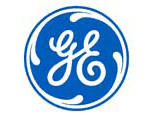There are a lot of horrible things you don’t want to wake up to, especially on a day when you’re already late for work. A dead battery or a flat tire make it to that list, as well as stubbing your toe on the bedpost, and let’s not forget everyone’s favorite—not being able to find your keys on the way out the door.
Every one of these situations can suck in its own unique way, but one of the worst situations to wake up to in your home is a clogged drain. Or even worse—multiple clogged drains.
Drain clogs are not confined solely to sinks; we can find them in our tub drains, shower drains, washing machine drains, and even toilets. Especially our toilets. A clogged drain may seem like a serious plumbing issue, but when it is localized to a single drain in a kitchen or bathroom, there’s a good chance it can be remedied quickly.
Drain clogs and backups in multiple drains throughout the house can indicate a more significant plumbing issue requiring help from a professional plumbing service like Nick’s Plumbing. Drain and sewer lines clogged with decades of coagulated cooking grease, shampoo, and hair can’t be cleared with a bottle of Drano or a plunger. More challenging, denser clogs will need a bit more power to break them up and flush them away.
Can I Fix a Clog in a Single Drain Myself?
The homeowner can often remedy clogs that are isolated to a single drain or toilet. The right tools, like a cup plunger for sinks, a bellows plunger for the toilet, and a manual drain snake, will make the task much more manageable.
Unless you can pull out the debris blocking the pipe with your drain snake, a sink clog will require you to remove the P-trap beneath the sink and clean it. If you have galvanized steel pipes, this process will require you to use a pipe wrench. However, most PVC drain fittings can be loosened and tightened by hand.
As far as toilet clogs go…we recommend calling a professional plumbing company if you cannot break up the clog with a few thrusts of a bellows plunger. There could be debris lodged in the S-trap of the toilet, and you may be dealing with a cracked toilet flange or a severe blockage in your main sewer line.
Attempting to free up a toilet blockage too aggressively –for instance, pouring gallons of hot water into the toilet—will only cause the chaos to spread, allowing raw sewage to seep up from sink and tub drains. We tried to warn you.
For those hearty do-it-yourselfers that read the above paragraph and still want to have a go at tackling your own drain clogs, we’ve published a blog that offers a few more solutions to DIY drain cleaning and perhaps save you the trouble and expense of a drain cleaning service call.
If you’ve gone over the do-it-yourself list and you’re still looking at a sink or tub full of water that isn’t going anywhere, give Nick’s Plumbing a call and schedule one of our licensed and experienced technicians to come out to clear your drain or sewer line.
While you’re waiting for us to arrive, let’s look at the difference between the do-it-yourself methods of drain cleaning and those used by professional plumbing companies.
How Professional Plumbers Clean Your Drains
I’m not revealing any secrets when I tell you that the plumbing business is a messy business. It takes years to learn, the technology is forever changing, competition is always hovering just over your shoulder, and at the end of the day, you go home covered in mud, grime, and whatever vile sludge comes out of a customer’s sink, toilet, or sewer line.
Clearing, repairing, and replacing toilet fixtures, toilet flanges, and sewer lines is a job that needs to be handled by professionals. Drains that empty more slowly over time, toilets that don’t thoroughly flush, and gurgling noises when using the sink or tub drain indicate that it’s time to consult a plumbing company to investigate the cause of your issues.
Professional plumbers have a wide array of tools available to aid in clearing clogs, using technology that didn’t exist in the plumbing industry as little as a decade ago. Several specialty tools are aboard the truck of every competent plumber, from pipe wrenches, blow-torches, and hydro-jetting machines.
Manual Drain Snakes
A manual drain snake, also known as a plumber’s snake or a drain auger, is a small boring tool that rotates slowly as it’s physically pushed through a stubborn clog. The terminal end of the device is a corkscrew-shaped hook that is fed into a clogged drain or toilet. Rotation of the hooked end occurs when the handle of the drain snake’s drum is turned, which also feeds more of the snake into the drain.
Manual augers are especially useful in clearing simple drain or toilet clogs, dislodging debris, and passing through the sewer system. In most clogged drains, the manual plumbing snake is sufficient to clear minor blockages relatively close to the drain opening.
Motorized Drain Snakes
When a blockage is discovered to be further down the drain line than the manual snake allows (10 feet) or is too solid to budge without assistance, a motorized drain snake is brought onto the job site. Powered snakes can reach 150 feet down a drain or sewer line, combined with an electric motor’s added torque and continuous rotation.
Motorized drain snakes are most effective for removing blockages caused by tree root infiltration but also for clearing grease, food waste, and sewage clogs. Motorized drain snakes can sometimes make a lousy plumbing situation worse; for instance, if your pipes are old and corroded, using a powered drain snake can break off chunks of metal, making the clog worse and shattering the line.
High-Definition Drain and Sewer Line Cameras
If your plumber hasn’t had success after attempting to clear a drain or sewer line with a motorized snake, it could indicate a complete blockage further down your sewer line. The high-definition snake camera is a recent technological advance that has helped the plumbing industry.
Looking at the interior of a pipe structure and seeing what is causing your drain blockage is a game-changer. Knowing exactly where a clog is and what it is made up of before treating it, your plumber can determine the best tools and most straightforward approach for the job.
Hydro-Jetting Machines
As exciting as plumber’s snakes and drain cameras are, neither holds a candle to when we get to use the hydro-jetting machines. Concentrated water jets can flush away decades of built-up grease, soap, and other nastiness that hangs out in your drain and sewer lines in seconds.
Powerful water streams from a hydro-jetting machine can reach as high as 35,000 pounds per square inch (PSI) and have more than enough power to eliminate any trace of residue from your pipe walls, leaving them in a “like-new” condition.
What Causes Drain Clogs?
First off, we can only solve a problem if we recognize it.
Anything we put into our drains and toilets will eventually contribute to a serious drain clog. Whether we’re flushing too much toilet paper or putting pasta and chicken skin into the garbage disposal, we’re asking for a world of trouble. Having a toilet back up into your bathtub is a horrifying experience, but it’s merely an inconvenience in the plumbing world.
DIY drain cleaning methods are great for localized, relatively easy clogs and partial blockages that can cause slow drains. We cannot stress enough to stay away from chemical drain cleaners. They’re bad for the environment and your plumbing and potentially detrimental to your health. Regularly using a harmless, enzyme-based drain cleaner that uses bacteria to eat away at the organic material in our drains can help prevent future clogs.
Who Can Unclog My Drain and Sewer Lines?
If you’ve tried all the do-it-yourself remedies and that clog still won’t go away, it’s time to call in an experienced and licensed plumber to do the job. Professional companies like Nick’s Plumbing & AC have the experience and equipment to identify and clear your clog regardless of location. Call us today to schedule your appointment with the best drain cleaning company in Houston, Nick’s Plumbing & Air Conditioning.


























